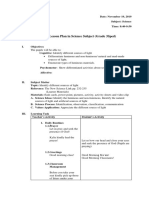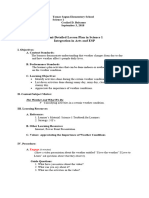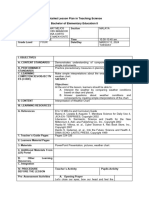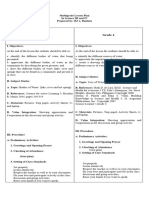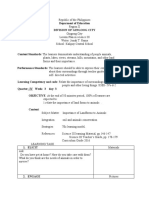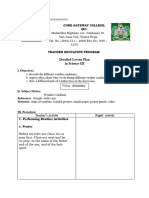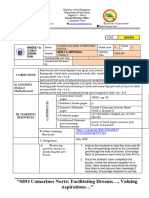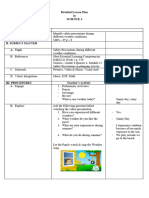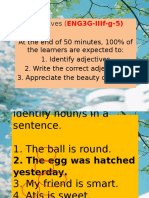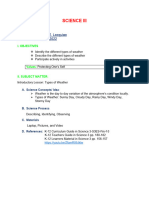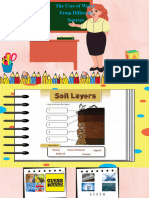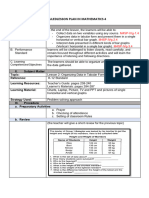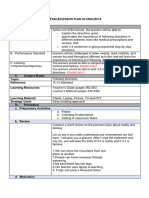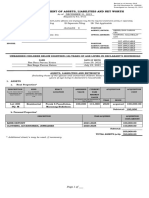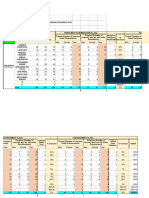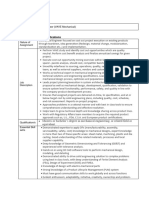0% found this document useful (0 votes)
1K views6 pagesDay 1 Science Grade 3
The document contains a detailed lesson plan for a Grade 3 science class about sound energy. The plan outlines objectives, materials, and procedures for a lesson that will teach students about the source of sound energy, properties of sound waves like amplitude and frequency, and how sounds travel. Students will participate in activities, discussions, and tests to demonstrate their understanding of these concepts.
Uploaded by
Rosemarie GaringCopyright
© © All Rights Reserved
We take content rights seriously. If you suspect this is your content, claim it here.
Available Formats
Download as DOCX, PDF, TXT or read online on Scribd
0% found this document useful (0 votes)
1K views6 pagesDay 1 Science Grade 3
The document contains a detailed lesson plan for a Grade 3 science class about sound energy. The plan outlines objectives, materials, and procedures for a lesson that will teach students about the source of sound energy, properties of sound waves like amplitude and frequency, and how sounds travel. Students will participate in activities, discussions, and tests to demonstrate their understanding of these concepts.
Uploaded by
Rosemarie GaringCopyright
© © All Rights Reserved
We take content rights seriously. If you suspect this is your content, claim it here.
Available Formats
Download as DOCX, PDF, TXT or read online on Scribd
/ 6








